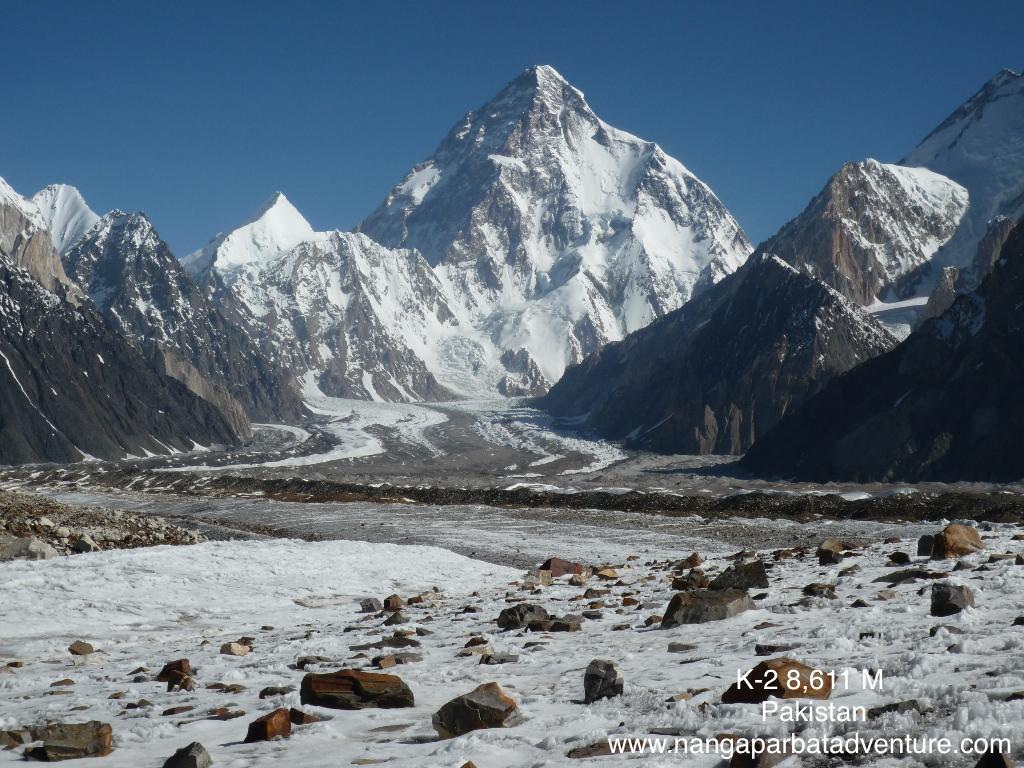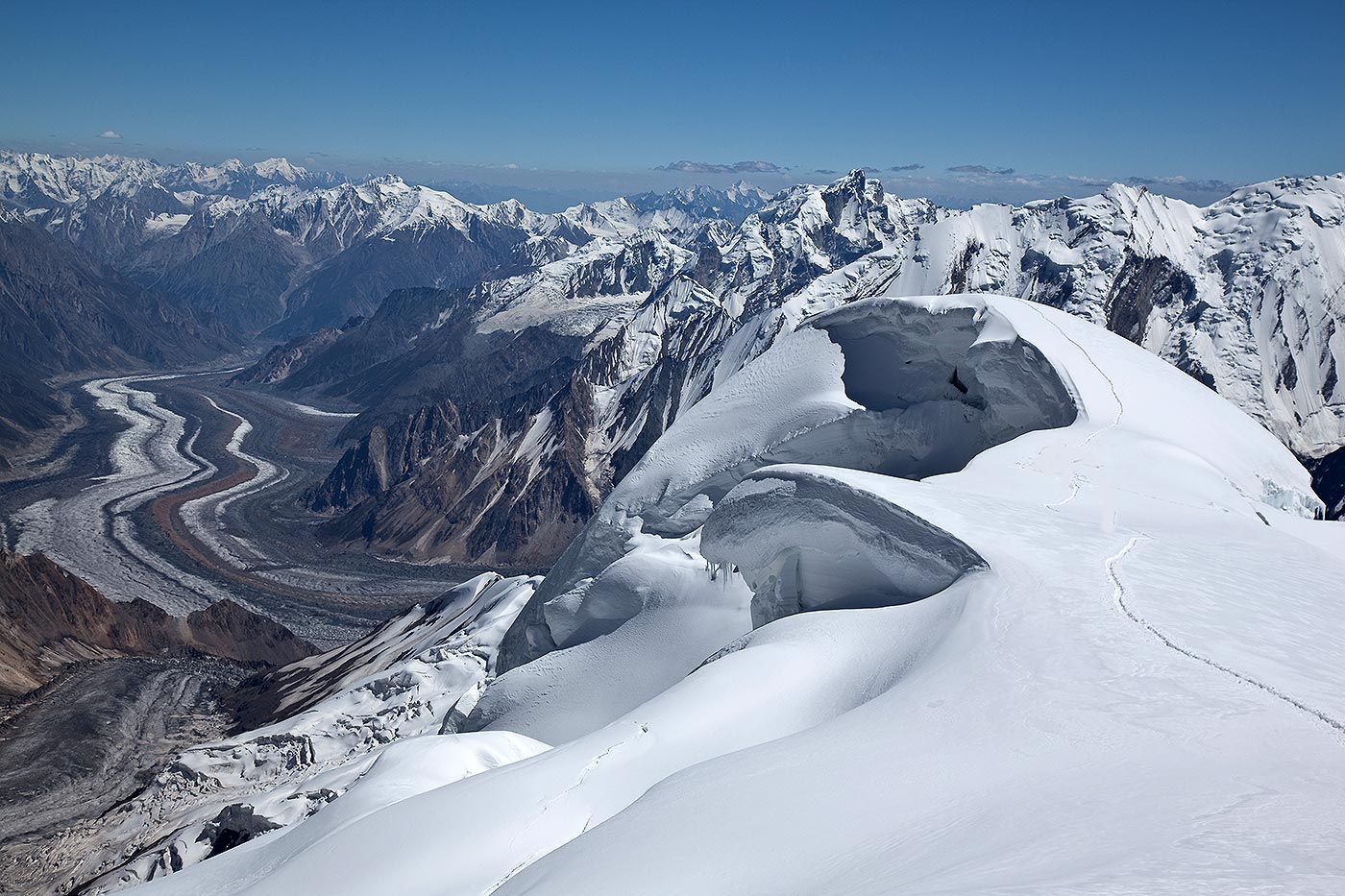
Diran Peak Expedition
Diran peak 7266 m is called Minapin as well as Diran. It is situated in the Rakaposhi and Haramosh mountain region near the Minapin, Hinarchi and Baultar glaciers and is easily accessible because of the Karakoram Highway.
“We have climbed the mountain there’s nothing more to do. It’s terrible to come down to the valley when, amidst many flowers one thinks of snow.”
Diran peak 7266 m is called Minapin as well as Diran. It is situated in the Rakaposhi and Haramosh mountain region near the Minapin, Hinarchi and Baultar glaciers and is easily accessible because of the Karakoram Highway. It is 7,273m/23,861ft. in height. Being one of the most fascinating peaks that dominates the Gilgit valley, Diran adds special color to otherwise rugged beauty of the valley.
Transfer to hotel. Made necessary arrangements.
Briefing at Ministry of Tourism.
Drive to Chilas. Transfer to Hotel for overnight stay.
Drive to Karimabad. Overnight at hotel.
Drive to Hapakun. Overnight at Camp.
Trek back to Taghafari. Overnight in tents.
Trek to Diran Peak Base Camp.
Reserved for climbing Diran Peak.
Trek back to Taghafari. Overnight at tents.
Trek back to Minapin. Overnight in tents.
Drive to Karimabad. Overnight at hotel.
Drive to Chilas. Overnight in hotel.
Drive to Islamabad. Overnight at hotel.
Debreifing at Ministry of Tourism. Overnight at hotel.
Transfer to airport.
Please Note:

Diran peak 7266 m is called Minapin as well as Diran. It is situated in the Rakaposhi and Haramosh mountain region near the Minapin, Hinarchi and Baultar glaciers and is easily accessible because of the Karakoram Highway.

K2 is located on the border of Pakistan and China. Being the second highest mountain in the world, it is thought by many climbers to be the ultimate climbing challenge. The giant Pyramid Peak towers in isolation 12,000 feet above the wide Concordia glacial field at the head of the Baltoro Glacier.

Spantik Peak 7027 m has 2 different climbing routes. Alexander Klenov and Mikhail Davy climbed the first section of the pillar along the English route and then continued via a new line which required 11 bivouacs overall.
Nanga Parbat Adventure tourism company is founded in 1999 and registered with Ministry of Tourism, Govt. of Pakistan.